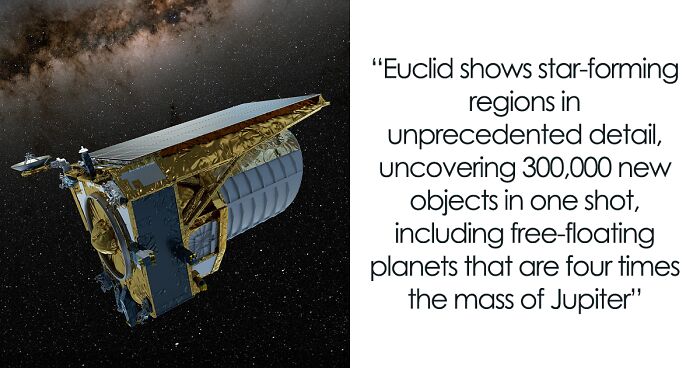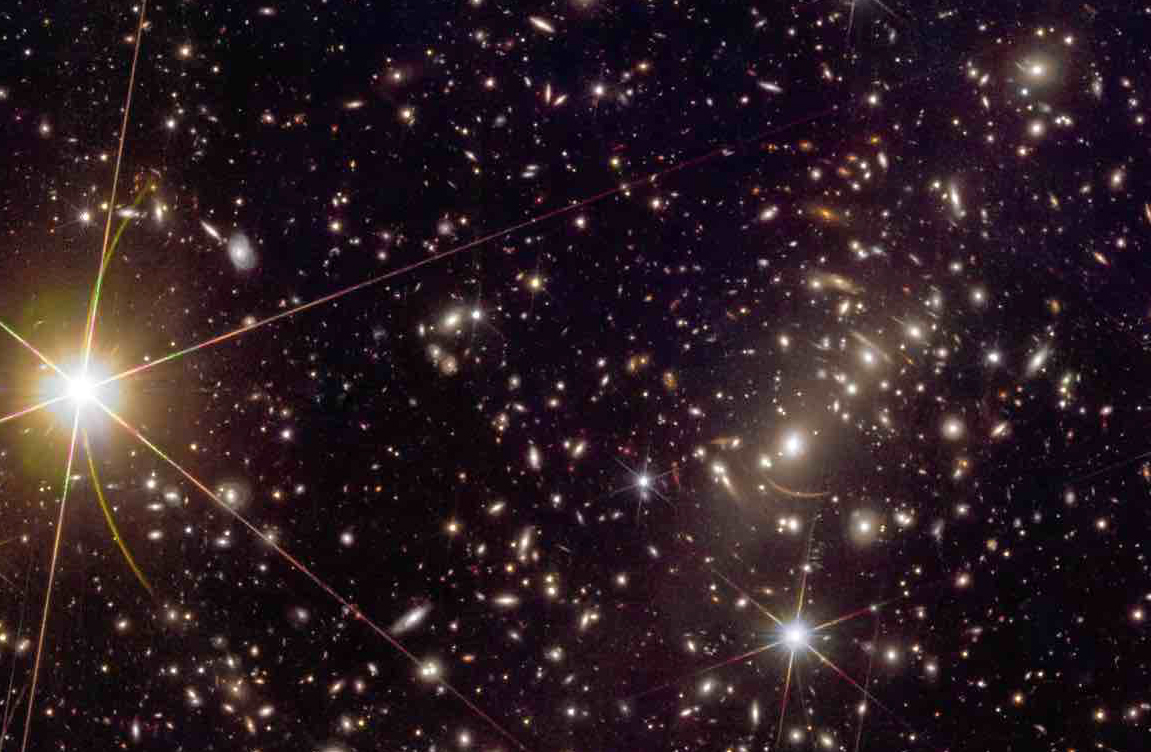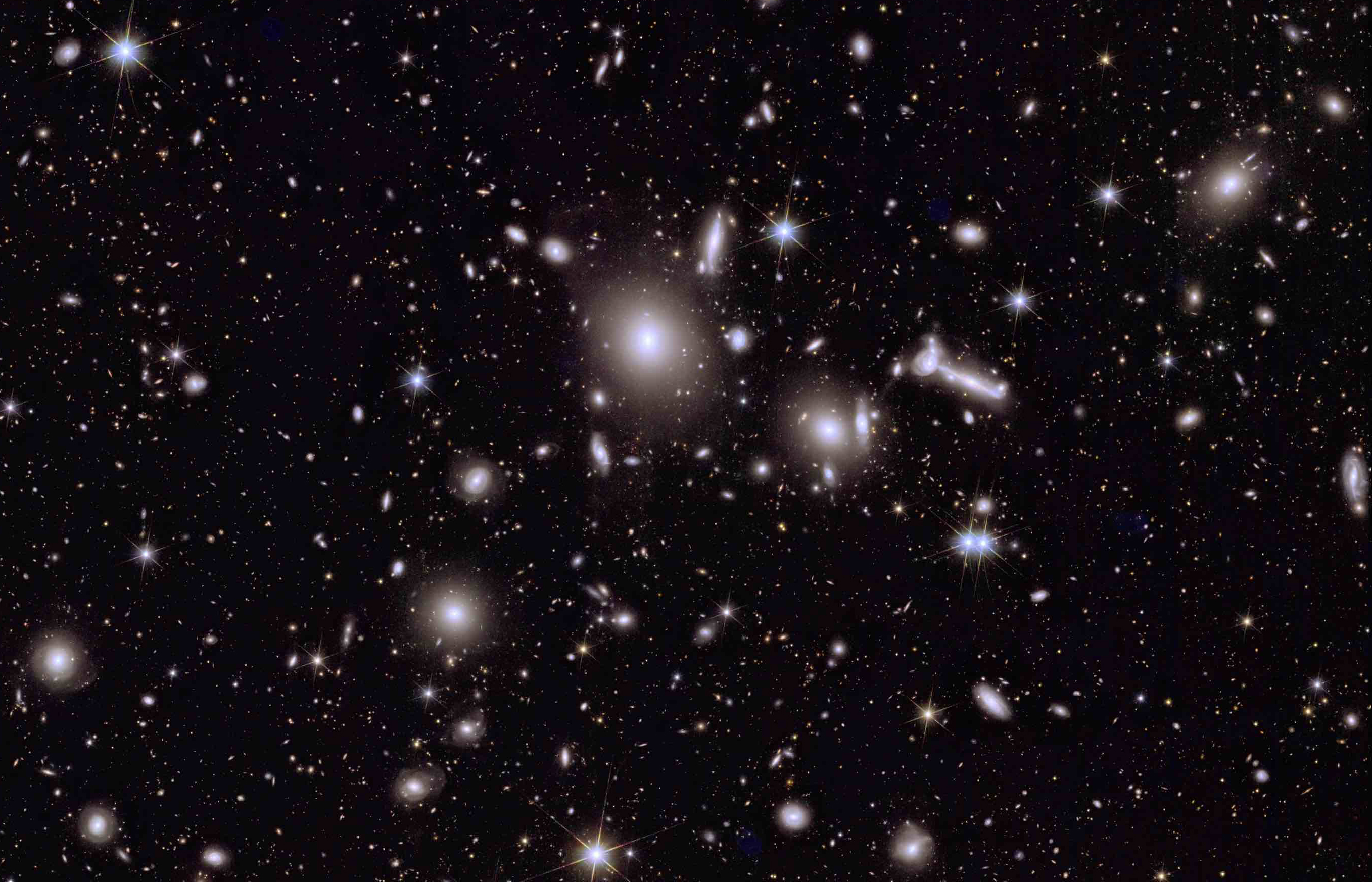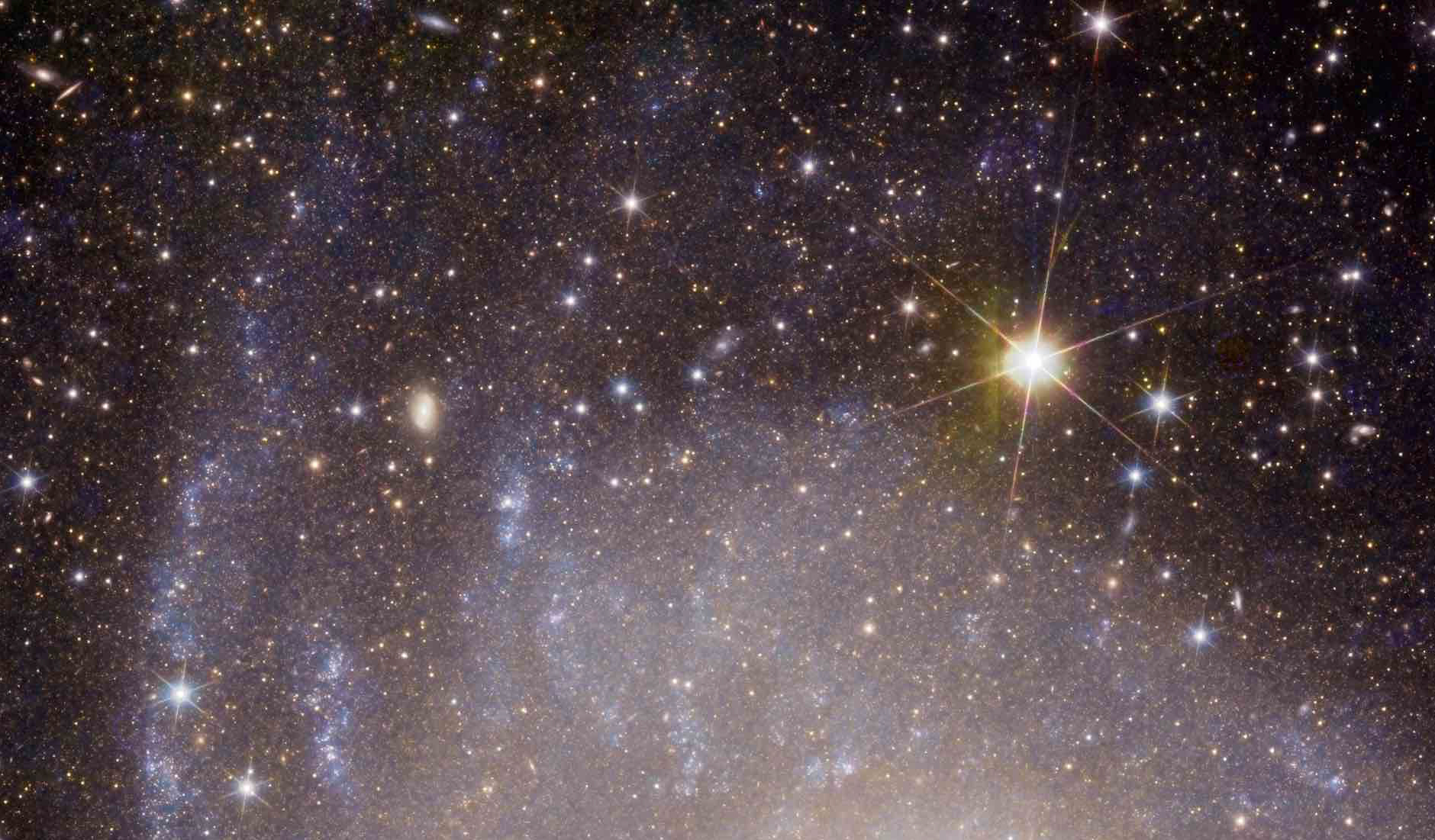
The Euclid Telescope Unveiled 5 New Images Of The Cosmos Using Its 600-Megapixel Camera
Euclid Space Telescope, developed by the European Space Agency (ESA) and the Euclid Consortium, was launched on 1 July 2023 from Cape Canaveral in Florida.
According to NASA, by 2030, Euclid will create a cosmic map that covers almost a third of the sky, using a field of view that is far wider than that of NASA’s Hubble and James Webb space telescopes, which will allow scientists to study dark matter with higher precision than ever before.
The mission released 5 new images which were taken shortly after Euclid’s launch as part of its early release observations program and they are astonishingly detailed.
More info: NASA
The Euclid has revealed 5 new images of the cosmos: from a star-forming region in the Milky Way galaxy to clusters of hundreds of galaxies that were taken shortly after its launch
Image credits: ESA / Messier 78
Image credits: ESA / Galaxy NGC 6744
Image credits: ESA / Abell 2764
These 5 new images made by Euclid are at least 4 times sharper than images that would be taken from ground-based telescopes. The incredibly detailed views vary from a star-forming region in the Milky Way galaxy to clusters of hundreds of galaxies.
“It’s absolutely amazing. I’ve worked with Euclid for a long time, around a third of my career, and we had detailed simulations of what to expect. But, I have to say, these new images are just so much more than I ever expected. These are the largest images of the universe ever taken from space, covering large swathes of the sky in fine detail. They demonstrate Euclid’s wide-ranging potential, from discovering new planets to surveying vast clusters of galaxies,” excitedly shared researcher Mark Cropper, lead of the team developing Euclid’s optical instrument.
“Euclid shows star-forming regions in unprecedented detail, uncovering 300,000 new objects in one shot, including free-floating planets that are four times the mass of Jupiter. During its mission, it will help us to better understand our universe, what it is made of, and how it has expanded and evolved over cosmic history,” added European Space Agency’s (ESA) Director General Josef Aschbacher.
Euclid’s images will help scientists to study dark matter by observing how this mysterious phenomenon warps the light from distant galaxies, as can be seen in one of the new images featuring a cluster of galaxies called Abell 2390.
Image credits: ESA / Abell 2390
Image credits: ESA / Abell 2390
In a galaxy cluster 2.7 billion light-years away from Earth, located in the constellation of Pegasus, more than 50,000 galaxies are visible. Near to the center of the image, some of them appear smudged and curved, showing the scientists an effect called strong gravitational lensing, which can be used to detect dark matter.
“One of the things we see is these giant arcs here, these smooth arcs that are curved, those are actually very distant galaxies that have their shapes hugely distorted by the gravity of the dark matter in the cluster. And some of these arcs are even multiple images of the same very distant galaxy,” shared Jason Rhodes, who’s a scientist at NASA’s Jet Propulsion Laboratories (JPL).
The tiny degrees of lensing or “microlensing” that can’t be seen for individual galaxies but can be statistically calculated for a vast amount of galaxies is especially useful in the hunt for dark matter.
“The strongest way to measure dark energy and dark matter is not by using the big arcs of galaxies, but by using the tiny distortions of every single galaxy in Euclid’s wide field of view. You need to have 1.5 billion to 2 billion galaxies and average them together to work out whether there’s a residual shape in that part of the sky, which the dark matter is causing the distortion. Euclid needs to see so much sky because these distortions are tiny,” explained Cropper.
In another image, a galaxy cluster located around 1 billion light-years from Earth, named Abell 2764, can be seen. A close-up of the image shows that galaxy clusters also contain bright objects marked by distinctive artifacts in the data known as “diffraction spikes.”
Euclid will help scientists to witness some of the most distant galaxies that existed during the early cosmic dark ages, around 700 million years after the Big Bang
Image credits: ESA / Abell 2764
“In this beautiful picture of Euclid we see many interesting things. In particular, we see a massive galaxy cluster at the top right corner of the image. This cluster contains dozens of massive galaxies orbiting a dark matter halo. Apart from this galaxy cluster we see an impressive density of sources in this image. This is what we call a blank field because it’s more representative of the large scale distribution of galaxies in the universe. This patch of the sky corresponds to only one pointing of Euclid, and the mission will map 30,000 times this area,” said Hakim Atek from the Institut d’Astrophysique de Paris.
The French astrophysicist explained that this diffraction of near and bright sources is unavoidable due to light interacting with the structures holding and supporting optics in the telescope’s instruments, yet this doesn’t impact Euclid’s precision.
“To achieve its core aim of better understanding dark energy and dark matter, Euclid’s measurements need to be exquisitely precise. This requires a camera that is incredibly stable and incredibly well understood, with conditions inside it that need to be controlled very carefully. The camera we developed will not only contribute beautiful images but help us answer fundamental questions about the role of dark energy and dark matter in the evolution of the universe,” added Cropper.
In the other image, Euclid captured the Dorado group, located around 62 million light-years away from Earth, with an ongoing collision between two galaxies. “A galaxy group is typically a lot of galaxies, but it’s a little smaller than a large galaxy cluster. Here, we can see its two main members in the very center. These are two big, older elliptical galaxies, and what we see is they are interacting. So we see galaxy evolution as it’s happening. This showcases beautifully this type of galaxy evolution,” shared Karina Voggel from Strasbourg Observatory. Further investigation of this astonishing image will allow the scientists to understand better how galaxies evolve within vast halos of dark matter.
Image credits: ESA / The Dorado group of galaxies
Euclid also perfectly captured the spiral galaxy NGC 6744, located 30 million light-years away from Earth. In the closer look of the image, we can see a disruption in one of NGC 6744’s spiral arms, revealing wispy spurs in the galaxy’s other features of gas, dust, and stars. The deeply detailed photo will allow astronomers to count individual stars within this galaxy and also determine the distribution of the dust.
“What is amazing about Euclid is the possibility to image with just one shot the entire galaxy with this beautiful spiral structure, but also to reveal the finest details,” said Francesca Annibali from the National Institute of Astrophysics (INAF). “While it is quite common to have a detailed view of small portions of star-forming regions, it is quite rare to have such a detailed view of a whole galaxy and all the star-forming regions. From this kind of data set, we can understand the physics of spiral structure and the connection to separation, which is something that is not yet fully understood. So these kinds of studies help us understand why the universe looks the way it does today.”
Image credits: ESA / Galaxy NGC 6744
The 5th and the final image made by Euclid shows a stellar nursery located around 1,300 light-years away, called Messier 78, with its mesmerizingly vibrant reds and pinks. It’s not the first time Messier 78 has been studied by telescope, yet never before was it done with such width, depth, or level of detail.
“This image is unprecedented. Such a large field of view actually enables us for the first time to study objects of very low mass such details and in a uniform manner. This is pretty unique because it hasn’t been ever possible before,” shared Maruša Žerjal from the Instituto de Astrofísica de Canarias (IAC).
“Euclid is the only wide field space survey telescope covering near-infrared wavelengths that can penetrate dense dust and gases. The Euclid Near Infrared Camera is so sensitive that it has already revealed the hidden regions of star formation for the first time. With one shot, Euclid has uncovered half a million objects, including galaxies and stars,” Jerry Zhang, also from IAC, explained in more detail.
By 2030, Euclid will create a cosmic map that covers almost a third of the sky
Image credits: ESA / Messier 78
Image credits: ESA / Messier 78
Image credits: ESA / Euclid Space Telescope
The Euclid spacecraft, which is approximately 4.7 m tall and 3.7 m in diameter, was named after the Greek mathematician Euclid of Alexandria as the density of matter and energy is linked to the geometry of the universe. It was designed to explore the evolution of the dark universe and make a 3D map of it by observing billions of galaxies out to 10 billion light-years, across more than a third of the sky.
These newly released images definitely mark the fascinating beginning of Euclid’s scientific results and show what an incredibly wide variety of science lies beyond the primary objective of the mission.
People on the internet were overwhelmed by new photos released by the Euclid team
Poll Question
Thanks! Check out the results:
Note: this camera is 600 megapixels, an iPhone 7 is 12, and the human eye is 576
Some of these photos are playing tricks on my eyes and look like they’re moving!
Note: this camera is 600 megapixels, an iPhone 7 is 12, and the human eye is 576
Some of these photos are playing tricks on my eyes and look like they’re moving!

 Dark Mode
Dark Mode 

 No fees, cancel anytime
No fees, cancel anytime 



































































66
5